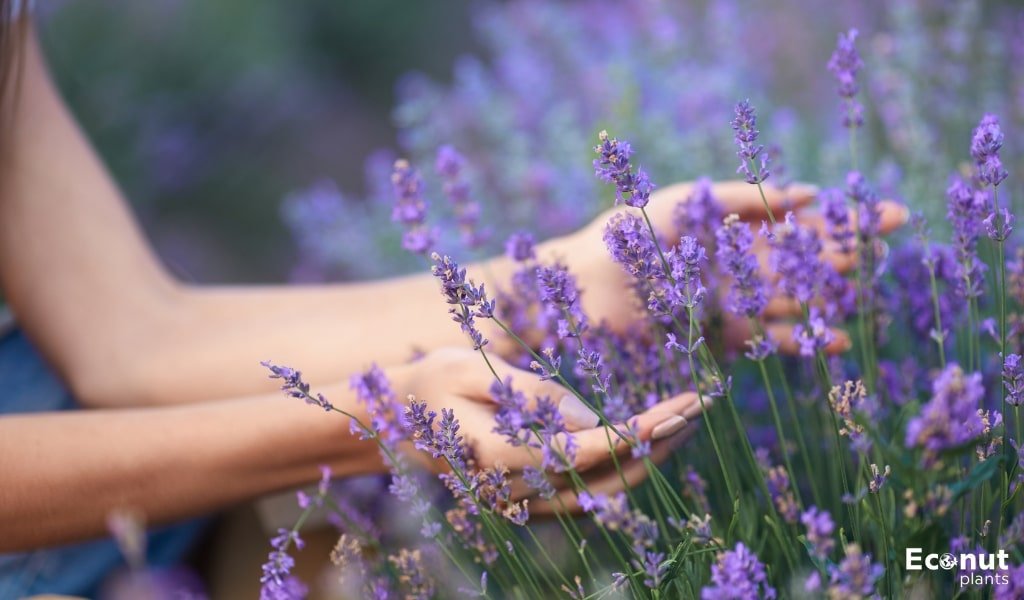One of the most beautiful and adaptable garden plants is lavender. This woody perennial herb has evergreen leaves with flowers that might be pink, white, purple, or violet.
Not only is lavender beautiful in your garden, but you may also harvest it for culinary purposes, fragrance, drying, and cutting bouquets. This post from Organic looks at 35 varieties of lavender for your garden!
1. Ballerina
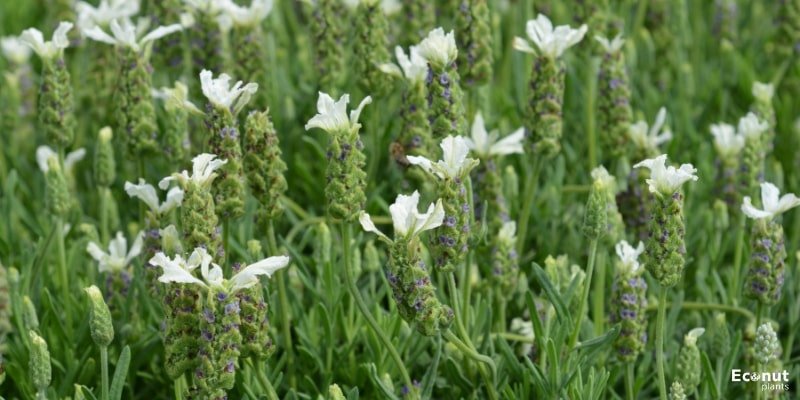
Lavender Type: Spanish
Hardiness: Zones 8-9
‘Ballerina,’ another exquisite lavender in the butterfly pattern, creates a mesmerizing display of cone-shaped, deep blue-purple blooms topped with lacy white bracts. This bicolor Spanish lavender blooms all season long in the yard and is sure to please. Its leaves have a pleasant, strong scent and resemble rosemary.
It grows very well in arid, poor soils. When planted in masses or clumps, the multicoloured flowers will look amazing and will attract a wide variety of pollinators. These plants also create great low-growing hedges, reaching a height of two feet, which add brilliant splashes of colour to an otherwise boring landscape of grass.
2. Royal Velvet
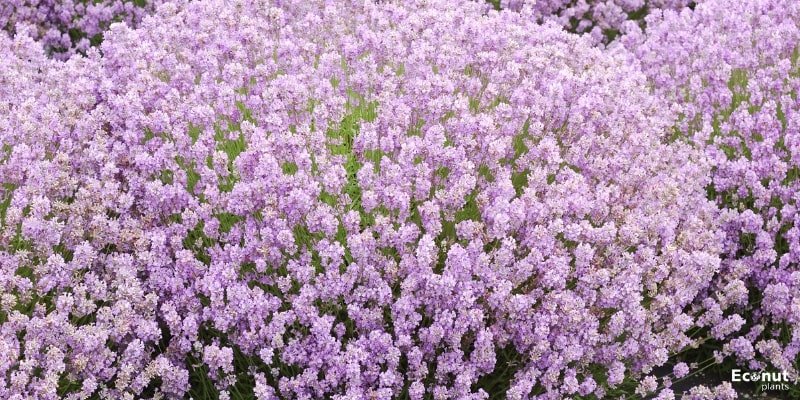
Lavender Type: English
Hardiness: Zones 5-10
The beautiful soft-hued violet and dark blue blooms that adorn its velvety-textured spikes are what distinguish “Royal Velvet.” The 4-inch-long flowers have a strong scent that draws bees, butterflies, and human noses.
Tall, durable flower stalks that sway in the wind and bloom again at least once following July harvests characterize this English cultivar. This kind is ideal for cutting, and it retains its colour and fragrance even after drying.
3. Betty’s Blue
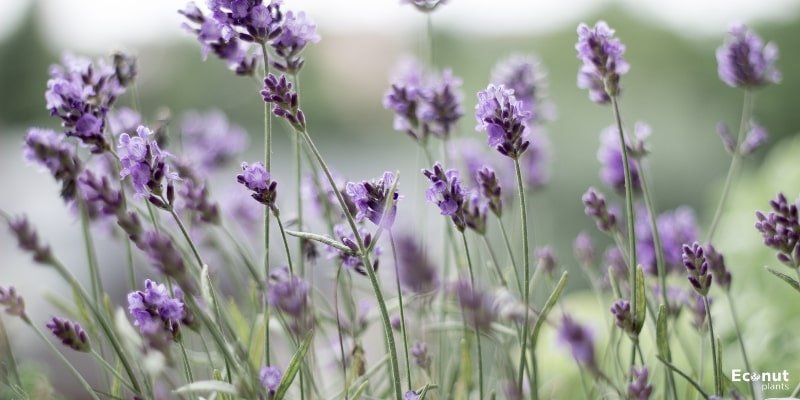
Lavender Type: English
Hardiness: Zones 5-9
Big clusters of rose- and deep violet-coloured flowers perch atop upright stalks that don’t spread out or droop. This English lavender grows into neat, compact bushes with a dome-like shape. Its blossoms are extremely delicious and aromatic. They can give a second, smaller flush in the autumn after their initial July bloom.
In particular, “Betty’s Blue” does well in hot, muggy regions with poor soils. This type will grow bushier and fuller if you clip it back in the spring after the initial flowers. Moreover, deadheading wasted blooms promotes a longer bloom cycle.
4. Grosso
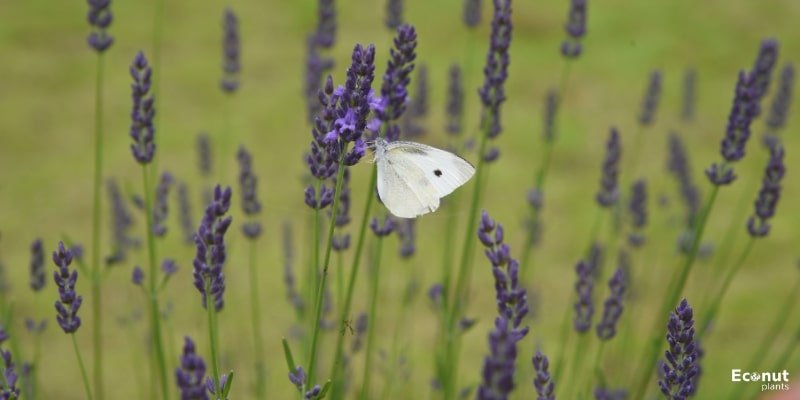
Lavender Type: Lavandin Hybrids
Hardiness: Zones 6-10
This is the type of lavender for you if you enjoy using it in dried flowers, pastries, cocktails, and garnishes. “Grosso,” French hybrid lavender with the most beautiful bluish-purple spikes that bloom all summer long, is maybe the most well-known lavender of them all.
Depending on pruning, the huge bush variety known as “Grosso” can grow to be 1-3 feet tall and 2-4 feet broad. It usually produces a single large flush of blooms, but you can count on a very large number and scent of blossoms. The elegant, long stems make lovely presentations for dried hanging bouquets or floral arrangements.
This hybrid can withstand moderate cold, but it detests the humid, rainy conditions of Florida or the Gulf Coast. But “Grosso” does flourish in the Pacific Northwest, coastal California, and the Southwest. It favours somewhat sandy, well-drained soils with little fertility.
5. Phenomenal
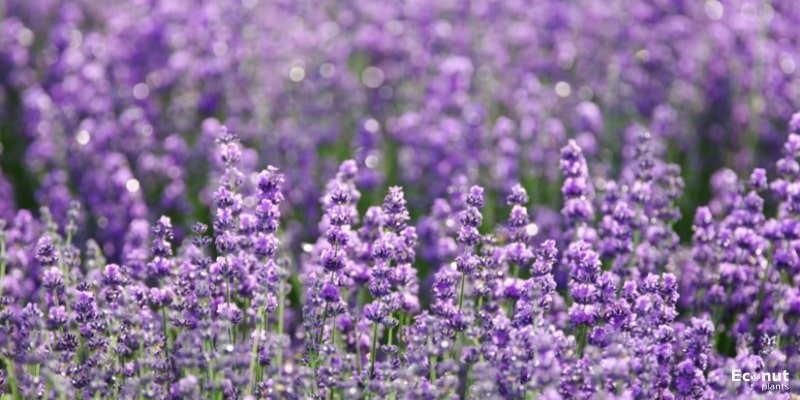
Lavender Type: Lavandin Hybrids
Hardiness: Zones 5-9
‘Phenomenal’ is a French hybrid with traditional lavender flower spikes that is similar to ‘Grosso’. Although it thrives in high-heat, high-humidity environments, it is well known for its resilience to cold and drought.
Large, mounded plants that blossom abundantly in the middle of summer quickly grow fragrant, rich green leaves all year long. Every spike of the blooms has a stunning range of colours, from blue to purple to violet.
“Phenomenal” attracts bees and butterflies and requires very little care, making it an excellent choice for an edible, ornamental, or herbal garden. Just make sure you give it enough room to grow and prosper.
6. Alba White Grosso
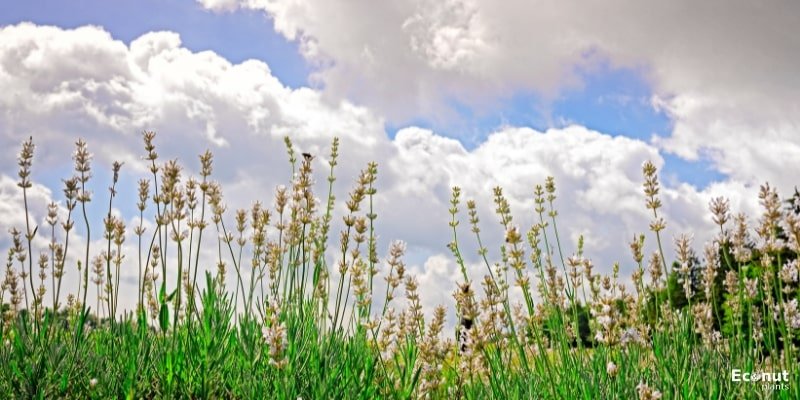
Lavender Type: Lavandin Hybrids
Hardiness: Zones 5-11
Consider combining your beloved French lavender “Grosso” hybrid with this white hybrid for a striking contrast in texture and colour. “Alba White Grosso” is a hybrid between Lavandula angustifolia “Alba” and Lavandula x intermedia.
Almost the same in size and form as “Grosso,” this white lavender grows to be just as big and bushy (2 to 3 feet tall), and it has a very comparable scent and stem length. When used as a backdrop for more striking colours in dry bouquets, the white blooms dry well.
7. Little Lottie
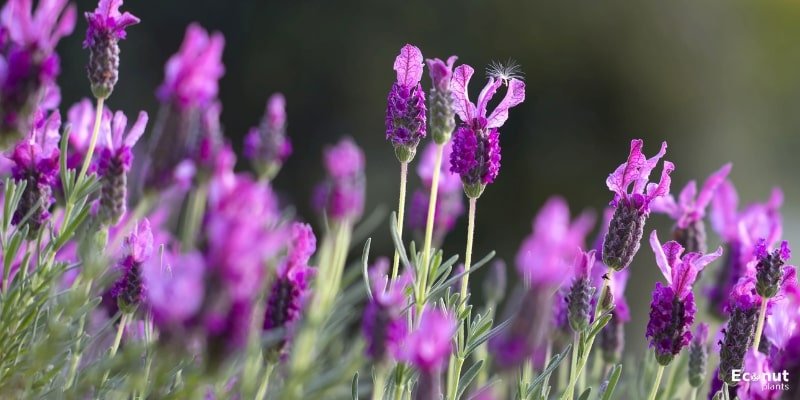
Lavender Type: English
Hardiness: Zones 5-9
The blossoms on a single spike of this English lavender are flecked with rose pink and creamy white. Distinguished from the typical spike-shaped lavenders by their distinctive round shape, the fluffy-shaped blossoms are unique.
It works well for containers and has uses in the culinary arts. When pruned back, this perennial lavender may produce a second, smaller flush in the autumn after blooming once in the early summer.
One of the most adaptable and distinctive white lavenders, “Little Lottie” excels in appearance, vitality, and scent.
8. Portuguese Lavender
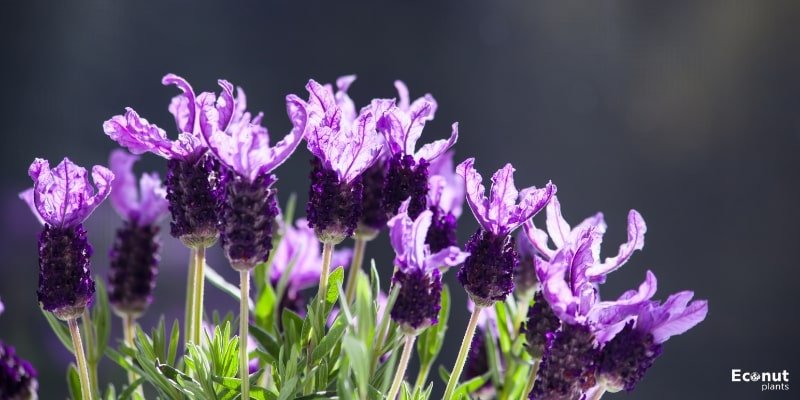
Lavender Type: Portuguese
Hardiness: Zones 7-9
Lavandula latifolia is a plant native to Portugal, southern France, and northern Italy. It originated in the higher-altitude regions of the western Mediterranean. Being extremely sensitive to extreme cold, it is among the least resilient varieties of lavender. In colder climates, it should be cultivated as a container plant or as an annual.
However, it is well known for having a high concentration of essential oils. In the past, Portuguese lavender was used as an antibacterial herb and to treat snake venom. The intricate, lengthy blooms of Lavender latifolia are paler violet at the outer edges and dark purple at the base. They usually flower later in the summer and are evergreen all year.
It’s interesting to note that lavender can tolerate situations with salted soil.
9. Egyptian Lavender
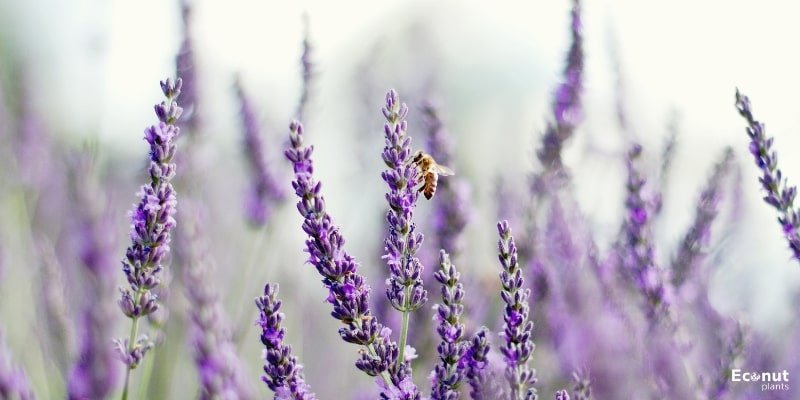
Lavender Type: Egyptian
Hardiness: Zones 5-9
Egyptian lavender, also known as Lavandula multifida, is distinguished from all other lavenders by its sprawling, silvery fern-shaped leaves and intricately stacked blossoms. It is also known as fern leaf lavender. Egyptian lavender is ideal for potpourri, dried bouquets, cut flowers, and landscapes. It also adds a delectably fragrant lavender scent to food when cooked.
10. ‘Goodwin Creek Grey’ French Lavender
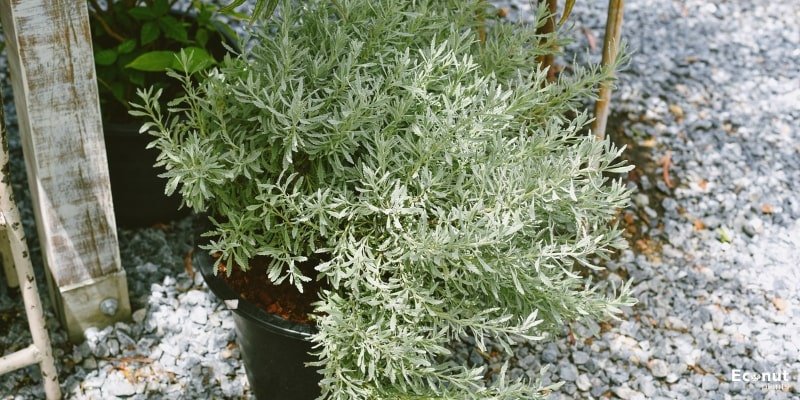
Lavender Type: French
Hardiness: Zones 7-9
This unusual French lavender, which is technically a member of the species Lavandula ginginsii, has one of the longest bloom periods among the French varieties.
Beneath upright cone-shaped dark purple blooms are attractively sprawled, delicately lobed leaves with a silver tone. It grows well as a low-maintenance shrub for small gardens or pots, measuring on average 24″ tall by 24″ broad.
11. Lacy Frills
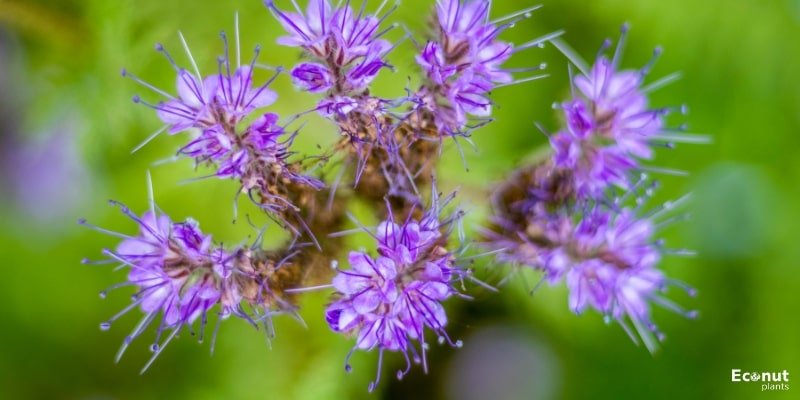
Lavender Type: English
Hardiness: Zones 5-8
‘Lacy Frills,’ a petite lavender with pale white to lilac-coloured blooms that consistently rebloom, is one of the few white lavenders that can be produced from seed. Growing “Lacy Frills” from cuttings or established plants is, however, much simpler.
On average, this hardy plant measures 10–12″ in width and 12–14″ in height. Its pleasant fragrance balances the deeper scents of real purple varieties.
12. Celestial Star
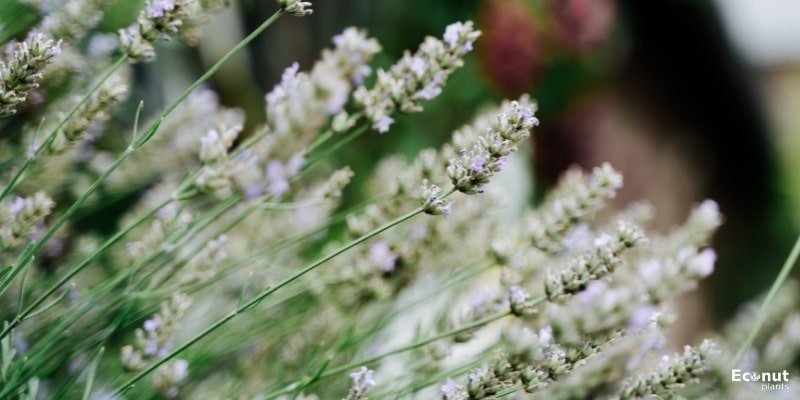
Lavender Type: English
Hardiness: Zones 5-9
This taller kind of English lavender produces vivid white blooms that make wonderful hedges, fragrant crafts, and dried bouquets. Another native of New Zealand, “Celestial Star,” was developed from the traditional Lavandula angustifolia. It can withstand light frosts while in its latent stage and reaches a height of around 28 to 30 inches.
13. Nana Alba
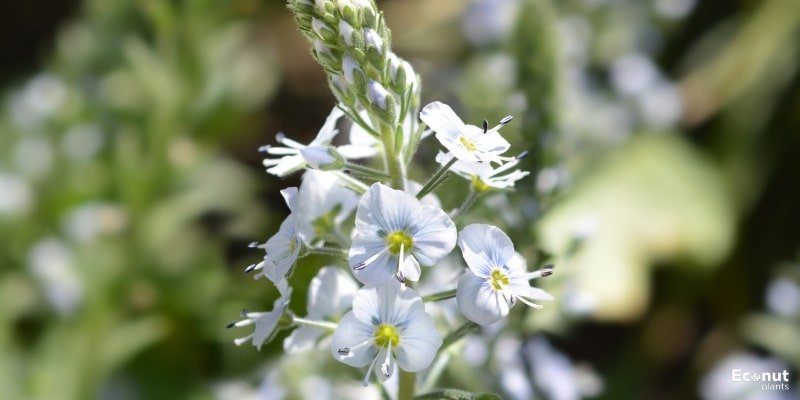
Lavender Type: English
Hardiness: Zones 5-9
Perfect for container gardening and borders, this extremely petite English lavender (12–16 inches) has a unique shape and colour.
It contrasts beautifully with deeper purple or blue kinds with practically pure white blooms. Charles Musgrave is the breeder of this heirloom variety, which hails directly from the UK.
14. Hidcote Giant
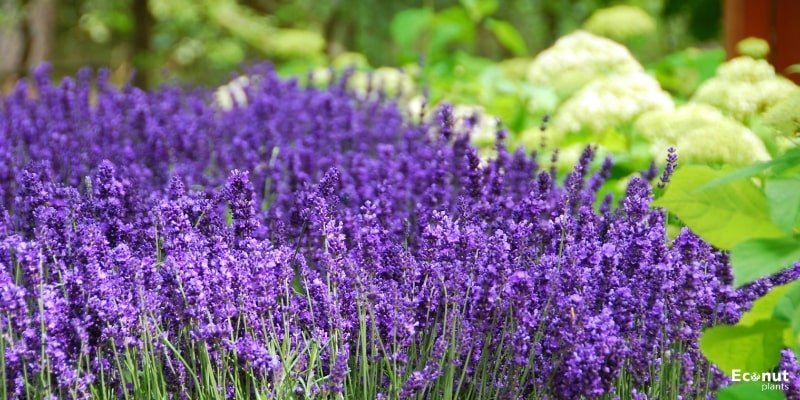
Lavender Type: Lavandin Hybrids
Hardiness: Zones 5-8
This unique lavender features magnificent 2-4″-long violet flower blooms on gracefully elongated stems. Lavandula x intermedia “Hidcote Giant,” which has won awards for its extravagantly potent scent, is highly valued for its lavender wands and cut flowers.
The profusion of dense blossoms, especially when arranged in rows or clumps across the garden, perfectly captures the image of a traditional lavender field.
About 2-3 feet tall and 3–4 feet broad, this enormous cultivar grows in massive, imposing mounds. Its exceptional resistance to drought and delicate flowery scent is combined with the heat tolerance of Portuguese varieties and the winter hardiness of English variants.
15. Lavenite Petite
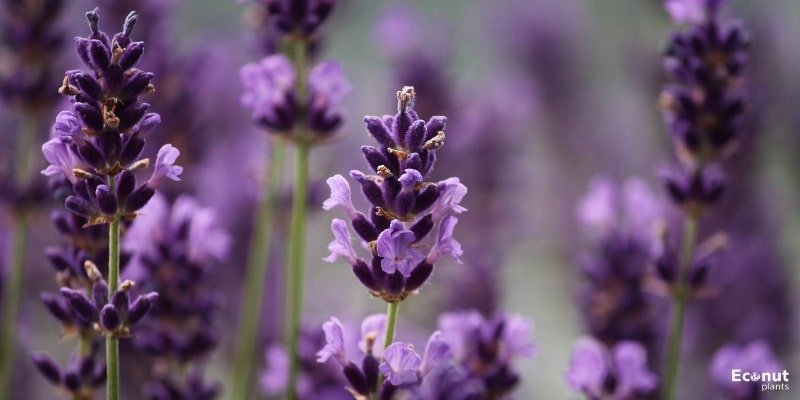
Lavender Type: English
Hardiness: Zones 5-9
This English kind of lavender is perfect if you’re looking for a powerful, perfume-like scent! It is characterized by thick, pom-pom-shaped flower spikes. In the garden and containers, the vivid violet-blue hue is stunning. Because it is a small variety, its short stems only reach a length of 6 to 8 inches.
Despite “Lavenite Petite’s” infrequent spring blooms, the evergreen sage-silvery leaves retain much of the fragrance of the flowers long after the blooms end in late summer.
16. Pastor’s Pride
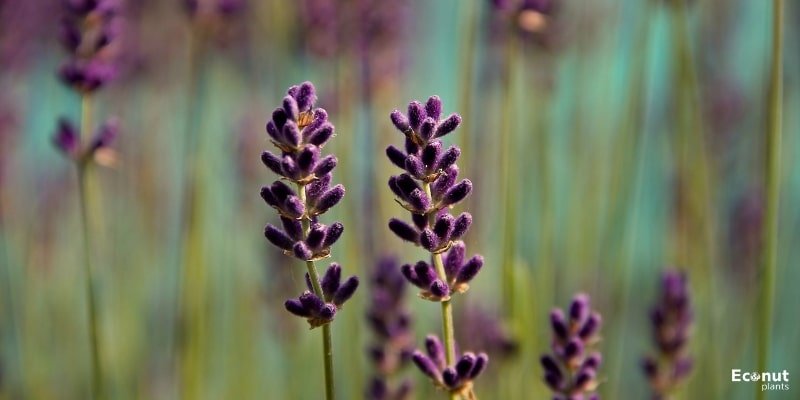
Lavender Type: English
Hardiness: Zones 5-9
Thumbelina Leigh is a tiny English lavender that fits perfectly in receptacles and small areas. The extremely fragrant, unusually plump blooms typically appear twice during the growing season.
This type resists droughts very well and grows well in poor soils. It grows stems long enough for stunningly cut flower bouquets, averaging 12 to 15 inches tall and 18 inches broad.
17. Kew Red
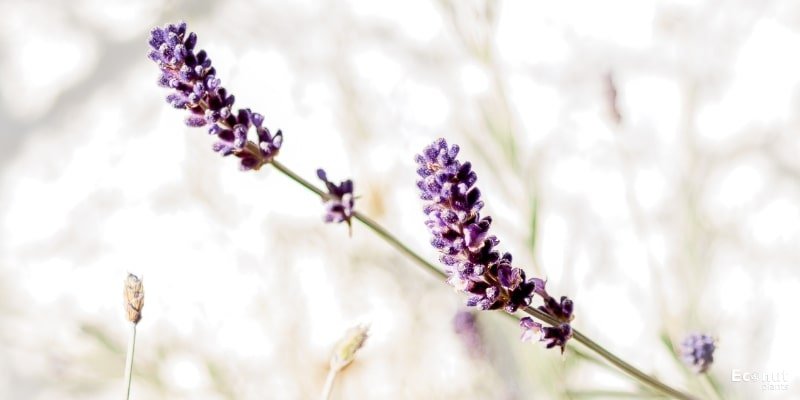
Lavender Type: Spanish
Hardiness: Zones 7-9
“Kew Red” is a bicolour lavender variety that has crimson red lower flowers and lacy pastel pink bracts. The profusion of these large flowers contrasts sharply with the foliage’s greenish-silver hue.
“Kew Red,” which grows to a 24″ bushy mound, is excellent for low-growing border plantings in clumps or pots. To maintain their greatest growth, they require full sun, well-drained soil, and heavy midsummer trimming. This Spanish lavender has dense flowers, so it needs air movement.
18. Anouk
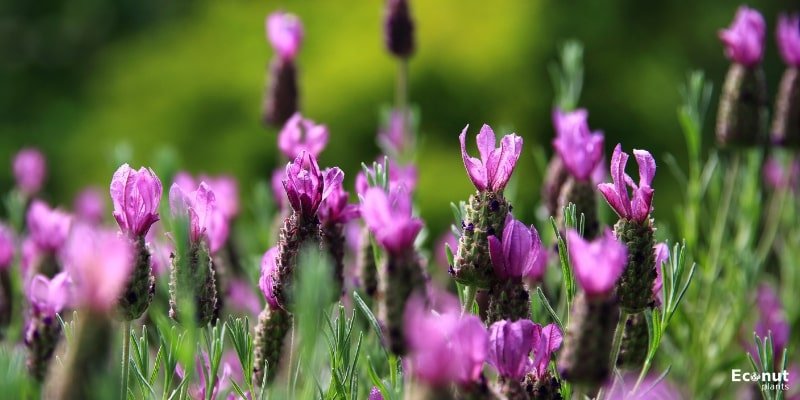
Lavender Type: Spanish
Hardiness: Zones 6-10
The dark plum-coloured flowers of this hardy, compact Spanish variety mature to a pastel pink hue, accompanied by vivid violet “rabbit ear” bracts. Anouk is a cultivar that looks very striking in the garden and has excellent, scented leaves that have a silvery tint.
It is sometimes referred to as “butterfly lavender.” With several flushes from May to late autumn, this cultivar blooms almost nonstop throughout the summer.
Actually, “Anouk” does best in poor soils that are rocky, sandy, and dry. This plant performs admirably in drought situations and is excellent for xeriscaping projects.
In addition to keeping rabbits and deer away, they draw your favourite bees and butterflies to your yard. Shearing or pruning “Anouk” back quite aggressively after the peak summer bloom can yield the best results and encourage strong flower stems in their fall flushes.
19. Fathead
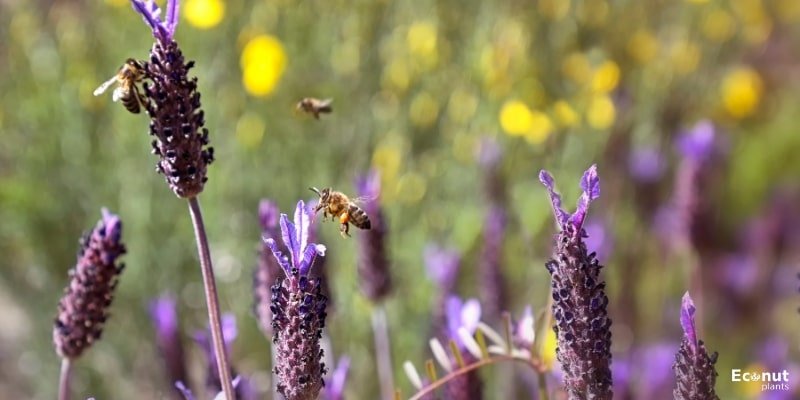
Lavender Type: Spanish
Hardiness: Zones 8-9
Another excellent small Spanish type that’s ideal for pots or tiny gardens is called “Fathead.” It features big, plump flower heads with fuschia upper bracts and dark purplish-black flowers. This butterfly lavender grows in a lovely bushy-mounded style and is evergreen in warm conditions.
It grows well in chalky, sandy, or rocky soils and has foliage suggestive of rosemary, just like its cousins, the Spanish lavenders. Add “Fathead” to border beds, patio edges, and plantings next to perennial alliums.
20. Vera
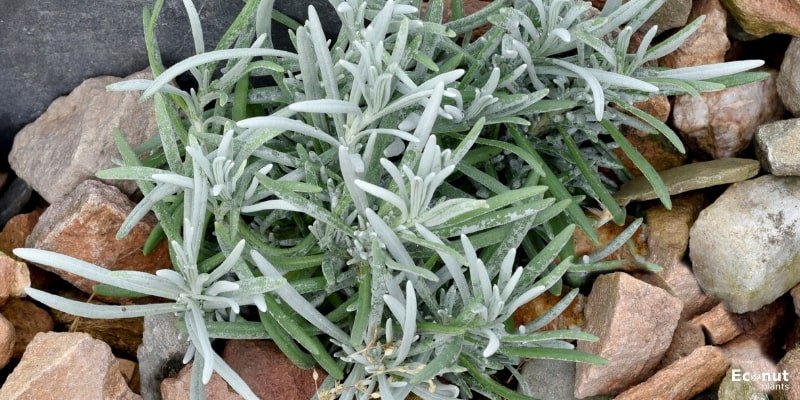
Lavender Type: English
Hardiness: Zones 5-10
Planting this narrow-leaved English lavender will make you happy if you enjoy aromatherapy. As one of the greatest lavenders for producing essential oils, “Vera” is highly praised. Surrounding the gardens in dry, sunny spots, it happily grows in poor soils.
For at least two intensely fragrant harvests, it blooms in the spring and late summer. These flowers have a scent that persists into winter and beyond when preserved correctly.
Growing to a height of 16–18″ and a width of 24–30″, “Vera” For countless decades, Mediterranean gardens have been home to this heirloom variety. As it becomes established, it exhibits exceptional tolerance to drought and cold.
21. Blue Cushion
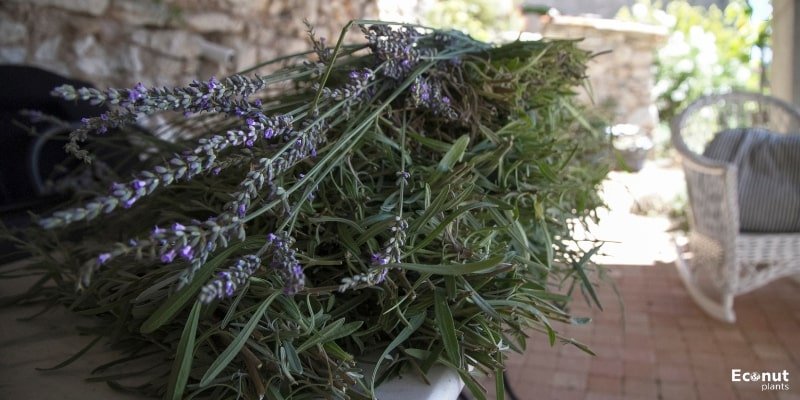
Lavender Type: English
Hardiness: Zones 5-9
Its compact shrubby habit has earned this lavender, with its peculiar fuschia and blue tones, the nickname “cushion.” In rock gardens or at the edges of a landscape, the grey-green foliage looks great. “Blue Cushion” is a low-growing plant that spreads up to 18 inches in each direction, making it ideal for tiny gardens.
It produces a profusion of scent, colour, and pollinator-attracting nectar as it blooms repeatedly throughout the season. Once their long bloom period is over, the flowers fade to a pleasing pastel purple, and they will continue to bloom if they are frequently clipped.
22. SuperBlue
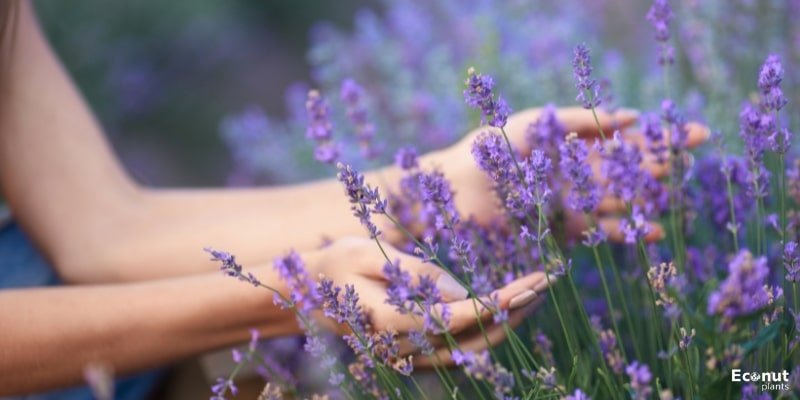
Lavender Type: English
Hardiness: Zones 5-8
‘SuperBlue’ blooms with stems that are tightly spaced with fewer gaps between them, making for a saturated and highly coloured display in pots or confined areas.
At just 12 inches tall, this little English lavender reaches its full potential for patio use or as an edge along garden paths. It is incredibly resilient, tolerant of drought, and consistently cold-tolerant when overwintering in Zone 5.
23. Hidcote
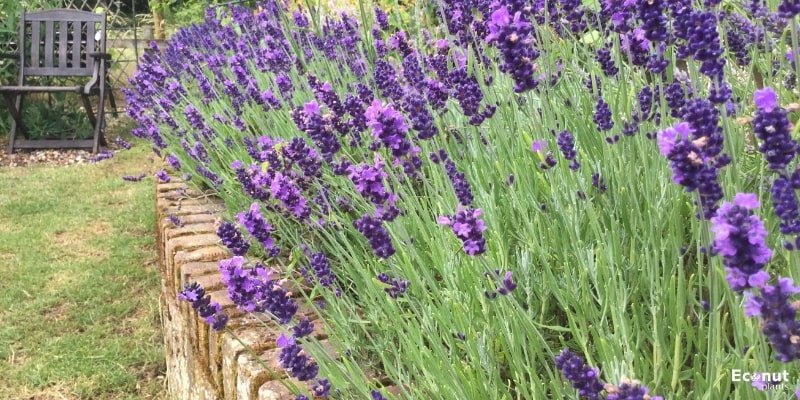
Lavender Type: English
Hardiness: Zones 5-9
“Hidcote,” one of the most well-known English lavenders, is a genuine classic. Free-flowering: you can find this type blooming in and around well-known British gardens and castles. “Hidcote,” a recipient of the Royal Horticultural Society’s Award of Garden Merit, grows quickly to become a 12–20″ tall shrub. It extends to a depth of 24″, forming a well-rounded bush.
The aroma of “Hidcote” emanates from its deep purple flower spikes and is among the most persistent and delicately delicious. It’s striking how the colours clash with the green-blue vegetation. Because it keeps its brilliant colour after drying, this kind is ideal for craftsmen.
24. Impress Purple
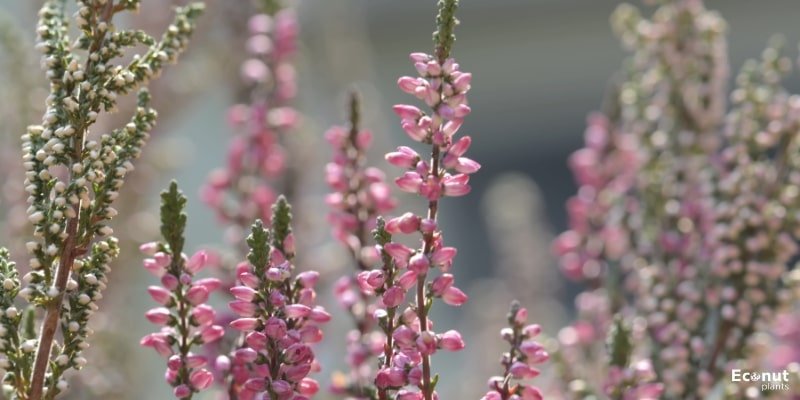
Lavender Type: Lavandin Hybrids
Hardiness: Zones 6-8
Hello, lavender bouquets for spring and summer! “Impress Purple” boasts tall, straight stems topped with strongly scented dark purple flowers, making it the ideal choice for cut flowers.
Depending on your preferred level of pruning, this quickly growing hybrid can reach a height of 36″ and spread out 3–4 feet in width. They are too big to fit into tight spots, but their robust tolerance for rocky, acidic soils more than makes up for it.
Although “Impress Purple” does not fare as well in humid climates, it can survive with adequate air circulation and spacing. In herb gardens, rock gardens, or large plantings, these magnificent plants are breathtaking.
25. Sensational
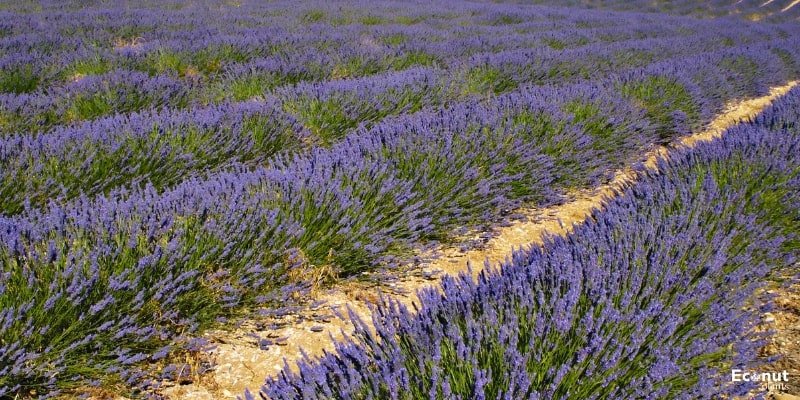
Lavender Type: Lavandin Hybrids
Hardiness: Zones 5-9
Sensational is an enhanced easy-to-grow hybrid with incredibly large dark blue flowers on a small plant that is perfect for beginning perennial gardeners. The silver-toned foliage produces bushy habits with stout stems. The bush reaches up to 30″ in full bloom and measures roughly 24″ broad by 18″ tall.
“Sensational” lavender is eager to grow in sunny, hot, and dry environments and has a moderate to high amount of flowery smell. From mid-summer to early autumn, “Sensational” should bloom in one or two prolonged flushes. It’s perfect for anyone trying to grow lavender for the first time because of its additional vigour, drought resistance, and eye-catching blossoms.
26. Alba
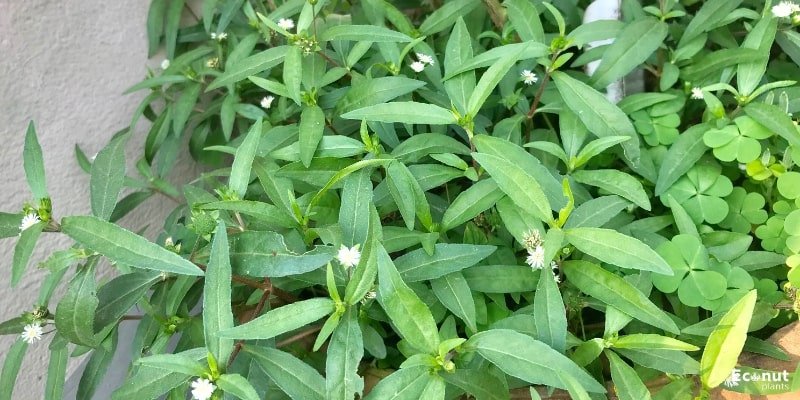
Lavender Type: English
Hardiness: Zones 5-8
“Alba,” a heritage white cultivar from New Zealand, is bigger and has a creamier hue than “Nana Alba.” At about 24 inches tall, mature plants are medium-sized and easily acclimated to humid environments.
27. Crystal Lights
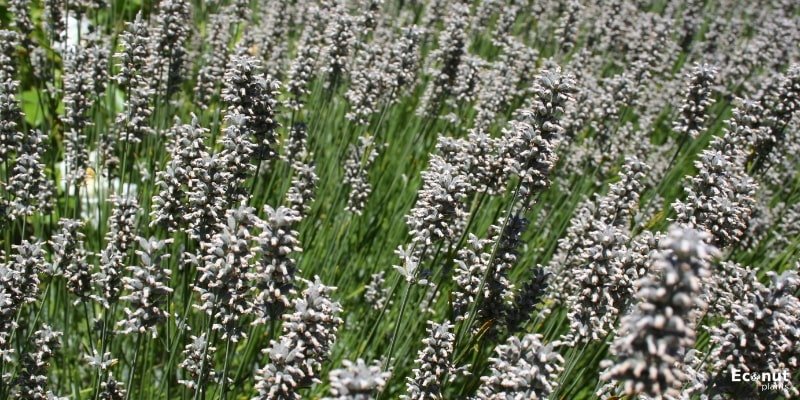
Lavender Type: Lavandin Hybrids
Hardiness: Zones 5-9
“Crystal Lights” is a wonderful choice for low landscaping and pots because of its small, rounded growth habit, making it an ideal choice for those seeking a more compact white lavender. Only approximately 15 inches can be reached by mature plants.
If you want to create an amazing display of blue, purple, and creamy white blossoms, you can interplant them with ‘SuperBlue’ and ‘Blue Cushion’. It is especially suited to mild coastal temperatures, such as those found in its native New Zealand, and blooms a few times a season.
28. French Lavender
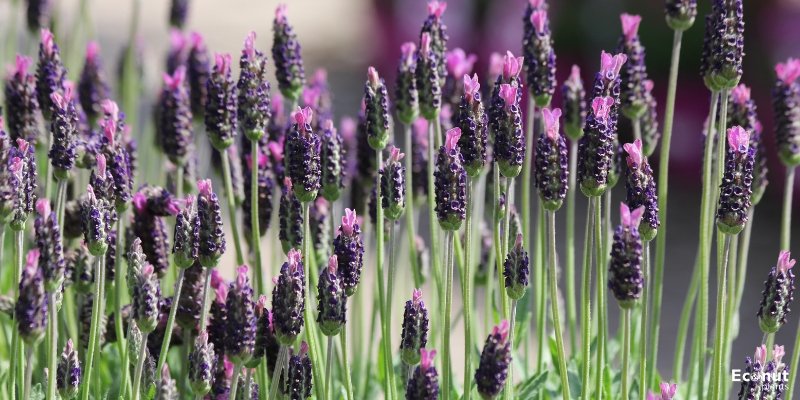
Lavender Type: French
Hardiness: Zones 8-11
The French lavender variety is ideal if you wish to enjoy a distinctive lavender flower show in your yard for an extended period! The Arabian Peninsula and Mediterranean coast are home to the bushy Lavandula dentata. Its elegantly serrated or scalloped leaves set it apart from other varieties.
The grey-green foliage, sometimes known as “fringed lavender,” has a texture akin to wool and contrasts attractively with the pale purple-to-blue blooms that grow in short spikes virtually all year round. When most other lavenders have finished blooming, the display usually peaks in the late summer and early autumn.
A sudden cold blast that drops below 20°F is the only thing that stops French lavender from blooming. These blooms are lovely complements to an ornamental garden, even though they are not advised for eating.
29. Munstead
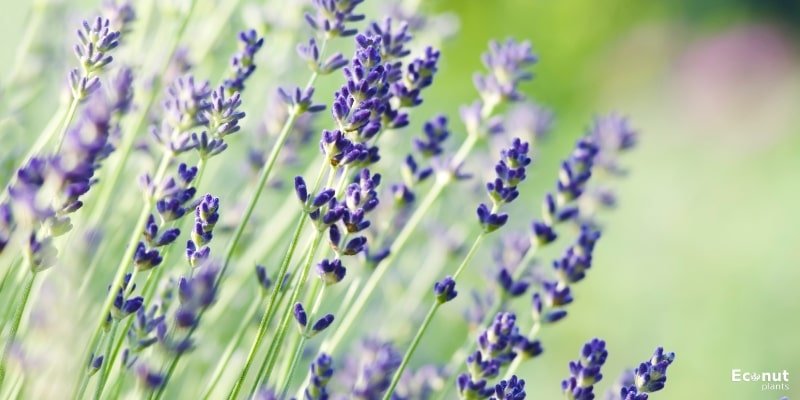
Lavender Type: English
Hardiness: Zones 3-8
These resilient, cold-tolerant plants are among the hardiest lavender kinds; they can withstand wintertime lows as low as growth zone 3. It is extensively accessible and multipurpose for culinary applications, aromatherapy, gardening, and pollinators.
These pastel-purple perennial flowers dry beautifully and retain a powerful aroma, even though their rather crooked stems are not ideal for floral arrangements.
30. Thumbelina Leigh
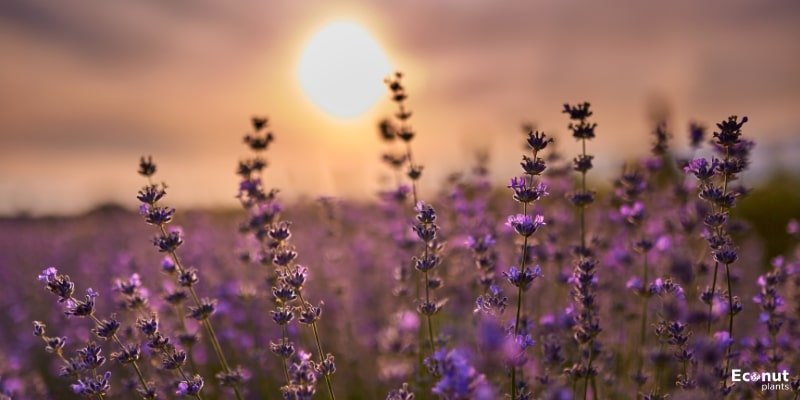
Lavender Type: English
Hardiness: Zones 5-9
Thumbelina Leigh, another little English lavender, is renowned for fitting perfectly into receptacles and tiny areas. The exceptionally plump blooms typically develop twice during the growth season and are quite scented.
This cultivar is exceptionally drought-resistant and grows well in poor soils. It grows stems long enough for exquisitely cut flower arrangements, averaging 12 to 15 inches in height and 18 inches in width.
31. Van Gogh
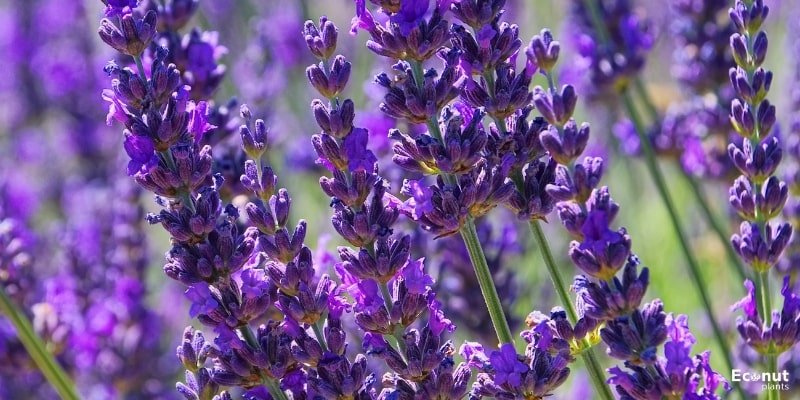
Lavender Type: Spanish
Hardiness: Zones 8-9
At last, a non-English white lavender! This unique kind of Spanish lavender features pasty white petals on top of baby blue and pastel violet flowers that contrast with dark, beautiful green foliage.
The combination of the three colours creates a stunning ornamental show. “Van Gogh,” a medium-sized lavender bush that reaches 24 to 30 inches, blooms profusely all during the growing season.
32. Jean Davis Lavender
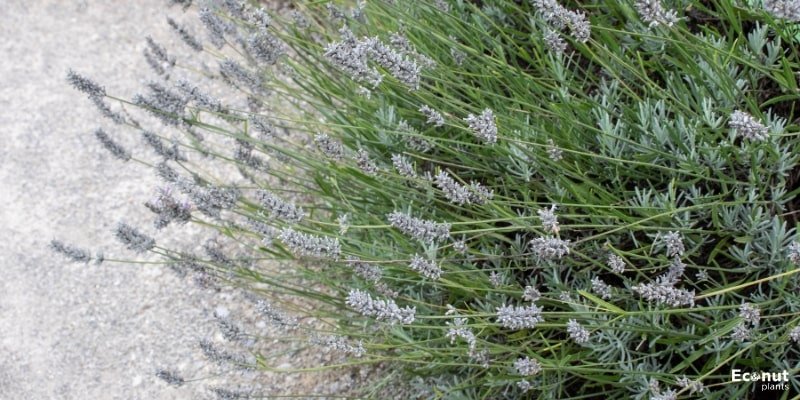
Lavender Type: English
Hardiness Zones: 5-11
Most lavender types have lavender flowers, but others, like “Jean Davis,” deviate from the traditional purple hue. This cultivar has delicate, nearly white, pale pink blossoms that taste more like fruit than bitterness, which makes them great for use in recipes for sweets or other baked goods.
While most varieties of lavender thrive in warm climates, ‘Jean Davis thrives in areas where summer temperatures aren’t consistently very high.
Conclusion
It’s hard to imagine growing bored in the garden with such an incredible assortment of lavender varieties available. Although lavenders have a subtle fragrance, they are incredibly resilient in the garden and willing to bloom even under less-than-perfect circumstances.
You can take cuttings of your favourite varieties of lavender and spread them over your garden. Try experimenting with a few different lavender varieties to see which ones grow the best for you. The peaceful serenity of lavender scents and swarming bees will soon fill your summer.

